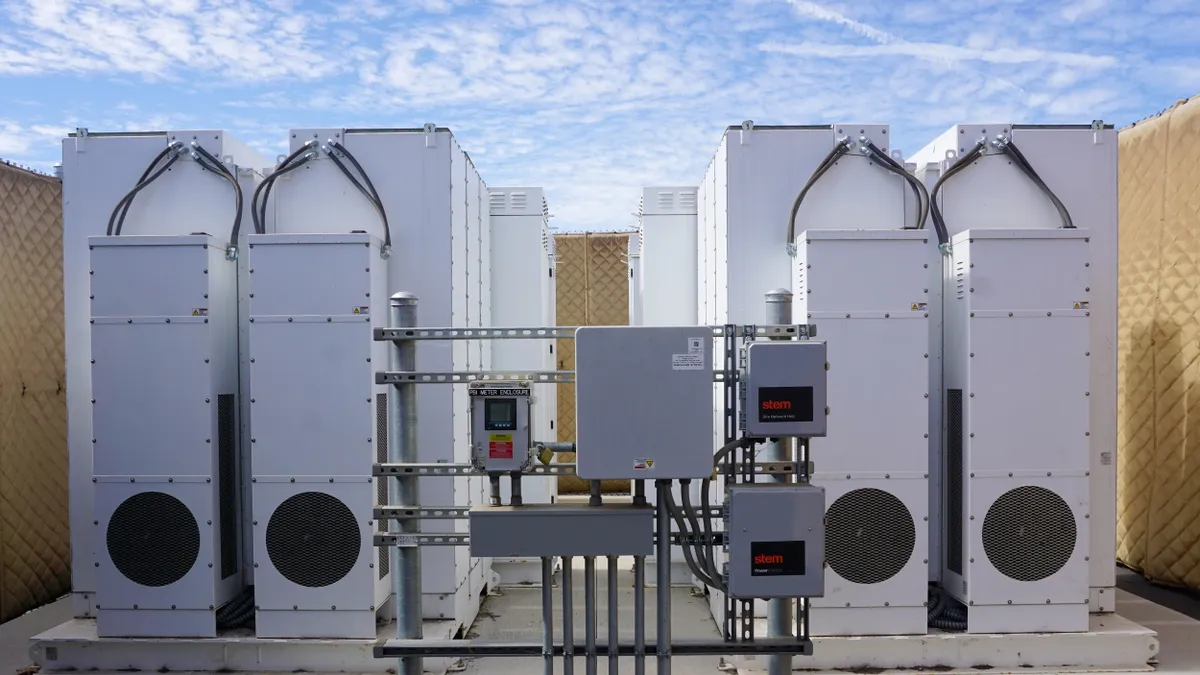Dive Brief:
- PJM Interconnection has proposed an Effective Load Carrying Capability (ELCC) framework that would refine the assessment of grid resources' reliability value as part of revisions to its tariff and its Reliability Assurance Agreement.
- The ELCC framework, which has been under discussion for more than a year, is a more sophisticated way of calculating the capacity contributions of intermittent renewable energy resources and will provide PJM with a way to assess the reliability role of storage facilities.
- The Federal Energy Regulatory Commission rejected PJM's first ELCC proposal in April, citing concerns with a proposed formula setting floor values for resources on a rolling annual basis. However, the commissioners' comments at the time endorsed the overall concept and PJM has replaced the controversial mechanism in its latest filing.
Dive Insight:
Implementing an ELCC would represent an "upgrade in PJM's approach to evaluating the capacity capability of its evolving resource mix," the operator said in its filing. The analysis, it said, would function as a "reliability backstop," preventing it from over-relying on resources that cannot provide sufficient capacity, while also simplifying planning decisions.
The new framework would replace PJM's daily summer-average approach for wind and solar, as well as a controversial 10-hour duration requirement for batteries to participate in its capacity market. FERC had previously initiated an investigation into whether the rule was unjust and unreasonable, which was put on hold as PJM worked on the ELCC framework. The new proposal will also give PJM a mechanism to evaluate hybrid resources that pair renewable production with storage.
Jason Burwen, interim chief executive officer of the U.S. Energy Storage Association, said the PJM framework represented "a necessary and significant step forward" by recognizing the reliability benefits that storage projects offer to a grid powered with renewable energy.
"Opening PJM's capacity market to storage ensures there are more clean energy options available in the mid-Atlantic region, as well as allowing states like New Jersey and Virginia to not be impeded from meeting their statutory state energy storage targets," Burwen said in an email. "The ELCC framework demonstrates what we have known all along — that energy storage and variable generation like wind and solar complement each other and can provide the resources needed for a reliable power system."
According to ESA figures, there were nearly 15 GW of standalone storage and 17 GW of solar paired with storage in PJM's interconnection queue. New Jersey has a goal of deploying 2,000 MW of storage by 2030 and Virginia has a 3,100 MW storage goal by 2035.
The Organization of PJM States, Inc., which represents utility regulatory agencies of 14 jurisdictions served by PJM, has not evaluated the proposal, said executive director Gregory Carmean.
PJM seeks an effective date of August 1, 2021 for the revisions, which it says would allow the ELCC framework to be implemented starting with the 2023/2024 delivery year.
The Midcontinent Independent System Operator uses an ELCC for calculating the capacity value of wind and and the California Independent System Operator has adopted an ELCC to some extent. Other grid operators are also exploring it.
Mike Jacobs, a senior energy analyst with the Union of Concerned Scientists, said it was likely that most grid operators would pick up some form of ELCC, in part to give assurance to utilities and developers for how renewable energy and storage will be treated.
"I think we will be saying that if we had not adopted an ELCC, the flaws would have caught up with us soon," said Jacobs. "It's hard to plan out a large amount of renewable energy if you're staring at a method that isn't going to last very long."














